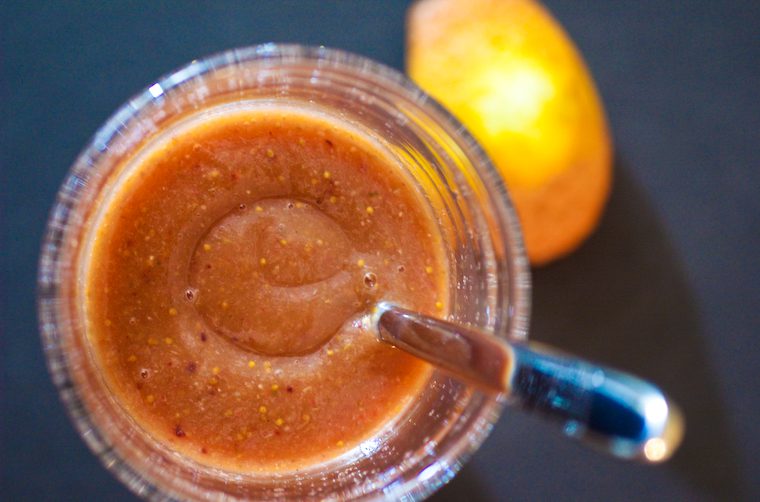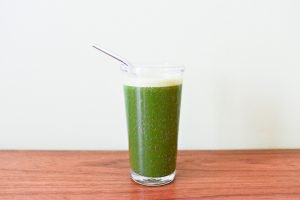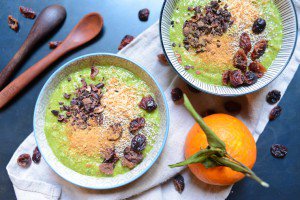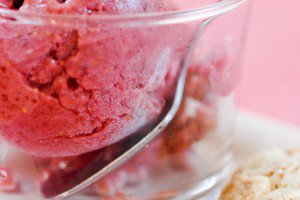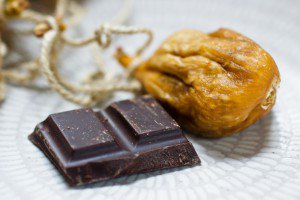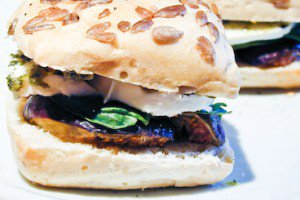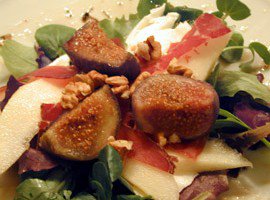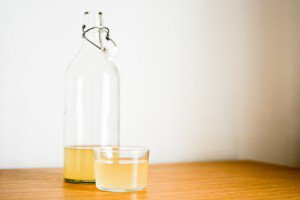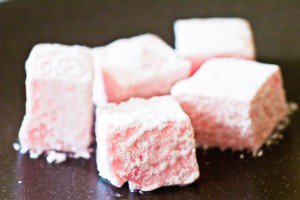Although smoothies have been around for decades in North America, only in recent years have they grown popular in Europe, and in France in particular*.
We call them smoothies too, if you want to know, except we don’t pronounce the final “s,” even in the plural, and the “th” sound, ever a challenge for the French tongue to produce, varies in accuracy. Most people opt for a straightforward smoo-zee, unless they go for a smoo-tee or even, more rarely but much more amusingly, a smoo-fee.
(I’ll take this opportunity to note that in France, when an English word is used in a French sentence, even those who normally have fair pronunciation skills will say that word with a French accent — it sounds pompous otherwise.)
In any case, it is now frequent to see smoothies for sale, either bottled or freshly blended, at sandwich-and-salad shops in Paris, and a few have made it their specialty. They’re also available in the supermarket’s juice aisle, and a number of books have been written on the subject — always a good trend-o-meter.
Among these titles is a recipe book issued by Innocent, a British company that produces dairy-free, all-natural, no-sugar-added smoothies, and markets them with a “we’re real people” approach that has served them extremely well so far.
The French rights for this book were recently acquired by my French publisher, and because Matthew Gardan, the half-French, half-Aussie guy who handles the marketing for Innocent France, happens to be a reader of Chocolate & Zucchini, he asked if I’d contribute a recipe to the French edition.
I said I would, and this is the recipe I offered: a simple fig smoothie, thick and velvety, its rich flavors exalted by a splash of rose water.
The book came out last May, and my recipe appears on page 154, among fifty-four other recipes that range from classic (strawberry and banana; carrot, apple, and ginger) to unusual (avocado and pear; blackcurrant and litchi), illustrated by candid photography on matte paper, and introduced by the friendly banter that has become the signature voice of Innocent.
You’ll find my smoothie recipe below — and of course, if you have a killer combo of your own to share, I’m all ears!
* Lilo tells me she had excellent smoothies in Amsterdam ten years ago, including a memorable one involving raspberries, banana, and passion fruit, so it seems some European countries caught on earlier than others.

Have you tried this? Share your pics on Instagram!
Please tag your pictures with #cnzrecipes. I'll share my favorites!
Ingredients
- 6 ripe black figs (about 250 grams or 9 ounces) (see note)
- 2 or 3 large oranges, to yield about 250 ml or 1 cup juice
- 2 teaspoons rose water, plus more to taste (see note)
Instructions
- Remove the very tip of the fig stems and quarter the figs.
- Juice the oranges.
- Combine the quartered figs, orange juice, and rose water in a blender, and whizz until smooth.
- Taste, and add a little more rose water if desired.
Notes
- If the figs you have are not very sweet, throw in a dried fig (preferably a baglama fig from Turkey), rehydrated overnight in a bowl of very hot water. It’s okay to use frozen (but thawed) figs; in France, they’re available from Picard stores, for instance.
- Depending on the potency of your rosewater, you may want to start with a gingerly amount (reader Meredith suggested 1/2 teaspoon) and work your way up from there.
- I use an all-natural rose water made in Lebanon by a company called MyMouné. I buy it at La Grande Épicerie; their orange flower water is great, too.
- Rose syrup can be substituted. The smoothie will be a bit sweeter (and no longer sugar-free) then.


